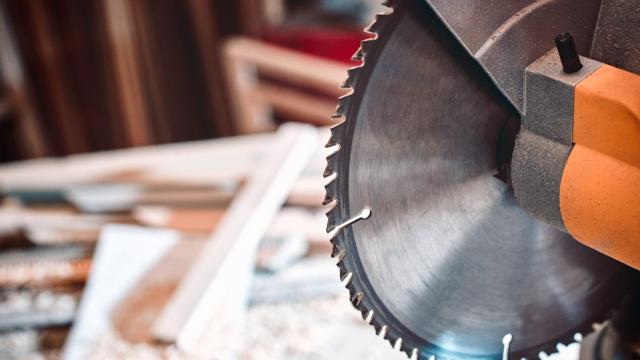Saw Blades come in many different types, and knowing the difference will save you time and extra trips to the hardware store. Using the right blade will also make your cut easier and look better, so here are the most common types of blades you’ll be looking for, and when to use them.
When to buy rip blades
Rip blades are the most common type of saw blade used in table saws and skill saws. They’re designed to cut parallel to the grain of the wood, and are shaped so that they’ll split the lumber you’re cutting like an ax would if you swing it at a log. The range of tooth count is about 10 to thirty, with the higher tooth count being for smoother, more finished cuts, and the lower for quick, rougher cuts.
If you aren’t interested in sanding a bunch before applying your glue and fastening your boards, you typically want to use a higher tooth count. If you’re working on something less finished, or that needs to be sanded anyway, the lower tooth count is a good choice. The downside to a higher tooth count is that your blade will wear out faster.
When to buy cross-cut blades
A cross-cut blade is intended to cut perpendicular to the grain of your lumber. These blades are designed to cut through many fibres in the lumber you’re using, meaning that although cross-cut blades generally have more teeth, they take longer and generate more friction when cutting. This is where the expression “going against the grain” comes from.
The distinction with cross-cut blades is the shape of their teeth: They have either alternate top bevel (described on the package as ABT) or Hi-ABT, an alternate bevel design with a sharper angle at the tip. The regular ABT is a good choice for softer lumber like pine, especially if you’re working on something that doesn’t require a high finish. For finer, more precise cuts with less tearout, a Hi-ABT blade is preferable, especially when working with hardwood.
The Hi-ABT blade has a finer tooth, so it will wear out more quickly. If you have a small project, a regular ABT blade and some sand paper are probably the right choice.
When to use combination blades
If you have some experience with woodworking, you know that if you’re making lots of cuts, changing the saw blade each time you use the saw isn’t practical. Combination blades are the most useful type unless you’re doing hi- finish cabinetry on a large scale, or doing a project where you only need to make one type of cut.
These combination blades have multiple types of teeth that range in count: Combination blades that will last and also perform a decently clean cut usually tend to be in the 40 to 60 tooth range. These blades have what’s known as an ATBR (alternate top bevel with raker) or Hi-ATBR tooth design. It can sometimes be referred to on the packaging as ATAFR, but they’re the same thing. This tooth design gives the blade some range in what it can cut by alternating the shape of the teeth.
For most DIY carpenters, this blade type will be your best friend, allowing you to make multiple types of cuts with the same blade.

Leave a Reply
You must be logged in to post a comment.